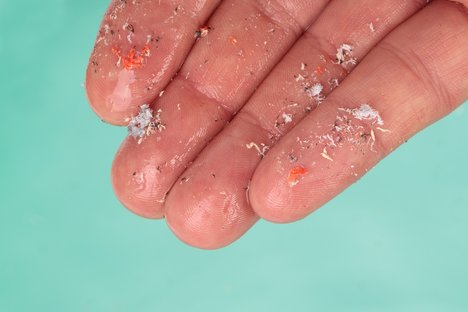博文
纳米塑料可以降低抗生素的有效性
 精选
精选
||
纳米塑料可以降低抗生素的有效性
诸平
之前关于“微塑料(Microplastics)”曾经写过几篇博文:如微塑料研究(医学与健康)高引论文(≥200次)、微塑料成为病原体和抗药性细菌的“中心”、科学家首次在血液中发现微塑料、蛋清可以转化为一种过滤海水中微塑料的材料、牛胃中的微生物可以帮助降解回收塑料、体内的微纳塑料是在细胞分裂过程中传递的、首次从植物叶子上的水中发现了微塑料、纳米塑料如何影响新陈代谢、看不见的入侵者: 微塑料是如何潜入你的大脑的?一项新研究发现人脑组织中存在微塑料、7000项微塑料研究表明,我们有一个真正的大问题等......今天再来介绍奥地利维也纳医科大学(Medical University of Vienna简称MedUni Vienna)网站2024年10月30日的相关报道,纳米塑料可以降低抗生素的有效性(Nanoplastics can reduce the effectiveness of antibiotics)。
在最近的一项研究中,维也纳医科大学(MedUni Vienna)与德国、巴西、英国、瑞典和匈牙利的研究人员组成的一个国际研究小组,研究了沉积在体内的纳米塑料颗粒如何影响抗生素的有效性。研究表明,塑料颗粒不仅会影响药物的效果,还会促进耐药细菌的生长。这项研究的结果2024年10月28日已经在《科学报告》(Scientific Reports)杂志上发表——Leonard Dick, Patrick R. Batista, Paul Zaby, Gabriele Manhart, Verena Kopatz, Lukas Kogler, Verena Pichler, Florian Grebien, Vince Bakos, Benedek G. Plósz, Nikola Zlatkov Kolev, Lukas Kenner, Barbara Kirchner, Oldamur Hollóczki. The adsorption of drugs on nanoplastics has severe biological impact. Scientific Reports, 2024; 14 (1), Article number: 25853. DOI: 10.1038/s41598-024-75785-4. Published: 28 October 2024.
参与此项研究的除了来自奥地利维也纳医科大学的研究人员之外,还有来自德国波恩大学(University of Bonn, Bonn, Germany)、德国马克斯·普朗克胶体与界面研究所(Max Planck Institute of Colloids and Interfaces, Am Mühlenberg 1, Potsdam, Germany)、巴西坎皮纳斯大学(University of Campinas, Monteiro Lobato, Cidade Universitária, Campinas, São Paulo, Brazil)、奥地利维也纳兽医大学(University of Veterinary Medicine Vienna, Vienna, Austria)、奥地利科学院分子医学CeMM研究中心(CeMM Research Center for Molecular Medicine of the Austrian Academy of Sciences, Vienna, Austria)、奥地利格拉茨的医学生物标志物研究中心{Center for Biomarker Research in Medicine (CBmed GmBH), microOne, Graz, Austria}、奥地利维也纳大学(University of Vienna, Vienna, Austria)、奥地利维也纳的圣安娜儿童癌症研究所{St. Anna Children’s Cancer Research Institute (CCRI), Vienna, Austria}、英国巴斯大学(University of Bath, Claverton Down, Bath, BA2 7AY, UK)、匈牙利布达佩斯科技经济大学(Budapest University of Technology and Economics, Műegyetem rkp. 3, Budapest, Hungary)匈牙利德布勒森大学(University of Debrecen, Egyetem tér 1, Debrecen, Hungary)以及瑞典于默奥大学(Umeå University, Umeå, Sweden)的研究人员。
为了研究体内的纳米塑料颗粒是否以及如何与抗生素相互作用,由卢卡斯·肯纳(Lukas Kenner, MedUni Vienna)、芭芭拉·基希讷(Barbara Kirchner,波恩大学)和Oldamur Holloczki(德布勒森大学)领导的研究团队,将一种常见的药物与广泛使用的塑料类型联系起来。他们的研究重点是广谱抗生素四环素(tetracycline),用于治疗许多细菌感染,如呼吸道、皮肤或肠道感染。在塑料方面,选择的是聚乙烯(polyethylene简称PE)、聚丙烯(polypropylene 简称PP)和聚苯乙烯(polystyrene简称PS),它们是包装材料中无处不在的成分,以及尼龙6,6 (nylon 6,6简称N66)。N66包含在许多纺织品中,如衣服、地毯、沙发套和窗帘等。纳米塑料小于0.001毫米(0.001 mm),由于其体积小,被认为对人类和环境特别有害。
利用复杂的计算机模型,该团队能够证明纳米塑料颗粒可以结合四环素,从而削弱抗生素的有效性。卢卡斯·肯纳强调说:“尼龙的粘结性特别强,”他指出了一个被大大低估的室内危险:“室内的微塑料和纳米塑料负荷大约是室外的五倍。尼龙是造成这种情况的原因之一:例如,它从纺织品中释放出来,通过呼吸进入人体。”
抗生素耐药性的危险(Danger of antibiotic resistance)
研究结果表明,四环素与纳米塑料颗粒的结合会降低抗生素的生物活性。与此同时,与纳米塑料结合可能导致抗生素被运送到体内意想不到的部位,导致其失去目标效果,并可能导致其他不良影响。卢卡斯·肯纳在此研究的另一个细节上报告说:“我们发现纳米塑料颗粒表面抗生素的局部浓度会增加,这尤其令人担忧。”这种浓度的增加可能导致耐抗生素细菌的发展。尼龙6,6和聚苯乙烯等塑料与四环素的结合更强,因此可能会增加耐药性的风险。卢卡斯·肯纳说:“当抗生素耐药性在世界范围内成为一个越来越大的威胁时,必须考虑到这种相互作用。”
这项研究表明,接触纳米塑料不仅有直接的健康风险,而且还可以间接影响疾病的治疗。卢卡斯·肯纳说:“如果纳米塑料降低了抗生素的有效性,那么剂量就会带来一个巨大的问题。”卢卡斯·肯纳着眼于未来研究纳米塑料对其他药物的影响。
本研究得到了匈牙利国家研究、发展和创新办公室(National Research, Development and Innovation Office through the project OTKA-FK 138823)、匈牙利科学院鲍耶·亚诺什研究奖学金(János Bolyai Research Scholarship of the Hungarian Academy of Sciences)、匈牙利国家研发创新基金(ÚNKP-22-5 and ÚNKP-23-5 New National Excellence Program from the National Research, Development and Innovation Fund)、奥地利格拉茨Cbmed股份有限公司(The project “microONE”, CBmed GmbH, Graz, Austria; www.cbmed.at)、奥地利研究促进机构{Austrian Research Promotion Agency (FFG; www.ffg.at/en)}、奥地利联邦科学、研究和经济部(Austrian Federal Ministry of Science, Research and Economy)、奥地利国家研究、技术与发展基金会(National Foundation for Research, Technology and Development)、基督教多普勒研究协会(Christian Doppler Research Association)、西门子医疗(Siemens Healthineers)、奥地利科学基金{Austrian Science Fund (Grants FWF: P26011, P29251, P 34781 as well as the International PhD Program in Translational Oncology IPPTO 59.doc.funds)}、德国研究基金会{Deutsche Forschungsgemeinschaft (DFG, German Research Foundation) as part of the CRC 1639 NuMeriQS - project no. 511713970}、巴西圣保罗研究基金会{São Paulo Research Foundation (FAPESP) for financial support #2020/10246-0 and scholarship #2021/09687-5, #2023/00531-8}、马克斯·普朗克胶体和界面研究所{Max Planck institute of colloids and interfaces within the project “ERC Sys MoMA-STOR” (Grant Agreement No. 951513)}的资助。
上述介绍,仅供参考。欲了解更多信息,敬请注意浏览原文或者相关报道。
Micro- and nanoplastics can interact with various biologically active compounds forming aggregates of which the effects have yet to be understood. To this end, it is vital to characterize these aggregates of key compounds and micro- and nanoplastics. In this study, we examined the adsorption of the antibiotic tetracycline on four different nanoplastics, made of polyethylene (PE), polypropylene (PP), polystyrene (PS), and nylon 6,6 (N66) through chemical computation. Two separate approaches were employed to generate relevant conformations of the tetracycline-plastic complexes. In the first approach, we folded the plastic particle from individual polymer chains in the presence of the drug through multiple separate simulated annealing setups. In the second, more biased, approach, the neat plastic was pre-folded through simulated annealing, and the drug was placed at its surface in multiple orientations. The former approach was clearly superior to the other, obtaining lower energy conformations even with the antibiotic buried inside the plastic particle. Quantum chemical calculations on the structures revealed that the adsorption energies show a trend of decreasing affinity to the drug in the order of N66> PS> PP> PE. In vitro experiments on tetracycline-sensitive cell lines demonstrated that, in qualitative agreement with the calculations, the biological activity of tetracycline drops significantly in the presence of PS particles. Preliminary molecular dynamics simulations on two selected aggregates with each plastic served as first stability test of the aggregates under influence of temperature and in water. We found that all the selected cases persisted in water indicating that the aggregates may be stable also in more realistic environments. In summary, our data show that the interaction of micro- and nanoplastics with drugs can alter drug absorption, facilitate drug transport to new locations, and increase local antibiotic concentrations, potentially attenuating antibiotic effect and at the same time promoting antibiotic resistance.
https://wap.sciencenet.cn/blog-212210-1457941.html
上一篇:流行的护肤品可能会让你的宝宝接触到干扰内分泌的化学物质
下一篇:生物医学成像突破:银纳米岛放大信号1000万倍
